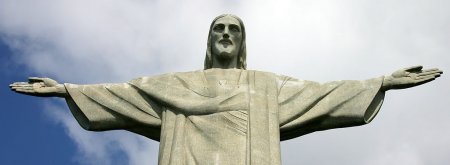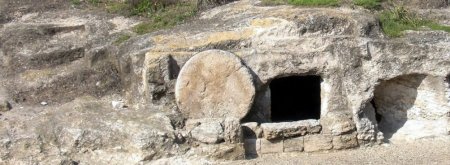Messiah: Jesus, the evidence of history
It is a secure fact of history that after the Romans crucified Jesus of Nazareth circa AD 33, his followers met weekly to worship him as Lord.
Pliny, governor of the Roman Black Sea province of Bithynia, reported to the emperor Trajan early in the second century that the Christians met on a ‘fixed day of the week’ and chanted hymns to Christ ‘as if to a god’ (Epistles 10.96). Pliny’s friend the historian Tacitus, governor of the adjoining province of Asia, wrote that Pontius Pilate had executed Christ during the reign of the emperor Tiberius.
These two famous Romans were quite negative about the new movement. Between them, however, they not only tell us where and when the Romans executed Christ (in Judea, between 26 and 36), but also that his movement had grown worryingly and its members were expressing worship to this executed criminal ‘as if to a god’.
These hostile Romans helpfully confirm the picture we have from the letters Paul and others wrote to Christian assemblies half a century earlier, within the time band AD 50-65. In a circular letter to a number of churches, Paul said that they were to sing and make melody in their hearts ‘to the Lord’ (Ephesians 5.19; also 1 Corinthians 14.26). Paul’s churches were in Greek-speaking regions, but they had come to know some Semitic words that went back a couple of decades earlier to Jesus and to the time immediately after him in Palestine. One example is the word abba, an Aramaic word for ‘father’ (Romans 8.15; Galatians 4.6). Another example, and more to the point, is in the words of the prayer Maran atha, which mean, ‘Lord, come back’ (1 Corinthians 16.22; also Revelation 22.20). It is evident, therefore, that the early Christians worshipped Jesus as Lord and prayed to him, pleading with him to return.
Jews Worship Someone Else
The breathtaking thing here is that Paul and most other New Testament writers were Jews. Paul, however, was no merely marginal or uninstructed Jew, but a leading younger Pharisee. A Jew like Paul would recite three times daily his nation’s creed, ‘Hear, O Israel: The Lord our God, the Lord is one’ (Deuteronomy 6.4). Moreover, none knew better than he that the Commandments forbade worshipping any person or thing instead of, or as well as, the Lord.
Yet here is Pharisee-trained Paul, who never renounced his Jewishness (Romans 9.1-5; 2 Corinthians 11.22), committing the greatest of sins for a Jew: worshipping someone alongside God.
The Pre-crucifixion Jesus
Why did Paul undergo such an intellectual revolution? Only one answer is possible: Jesus’s impact upon Paul.
Paul is not alone in this worshipful attitude to Jesus. In fact, every contributor to our New Testament calls Jesus ‘Christ’ and ‘Lord’. And they are all Jews except Luke.
What I write here is historical fact that no serious scholar doubts. The writings of Pliny, Tacitus and Paul are securely dated and rest on well-attested manuscripts. Moreover, they are commentary on living situations and are not written to prove or disprove the history of early Christianity.
The thing many serious scholars do doubt, however, is that the historical figure of Jesus was potentially worshipful. In fact, the general assumption of many is that in their worship of Jesus in the years after him, the early Christians were grievously mistaken. Such scholars say that the historical Jesus must have been something other than the early Christians had come to believe and worship. The blame for this mistake is usually attributed to Paul.
Those scholars who claim that Jesus was something other usually engage in what has been called ‘nothing buttery’. The real Jesus, they say, was nothing but x, y or z, in fact, anything but a figure to be worshipped.
One scholar who views Jesus positively is Geza Vermes (an expert on the Dead Sea Scrolls and other Jewish literature), who mounted a case that Jesus was a ‘charismatic’ rabbi whose prayers God answered in amazing ways.
Also positive about Jesus is John Dominic Crossan, who seeks to explain Jesus as a Galilean social subversive who had been influenced by the Greek Cynic movement, and who was seeking to overturn the corrupt, powerful and property-owning elites in the rural areas. Crossan holds that Jesus’s simple and direct message was subsequently corrupted in Jerusalem by Mark and later by Paul.
It is no exaggeration to say that hundreds of Jesus books have been written in recent years. Those by Vermes and Crossan are only two. The one important thing they, and most other books about Jesus, have in common is their assertion that Jesus was nothing but a rabbi, prophet or reformer. Implicit or explicit, therefore, is their assumption of discontinuity between the historical, pre-resurrection Jesus and the post-resurrection figure whom the early Christians worshipped.
Flawed Reasoning
To drive this wedge between their Jesus and the early church’s worshipped Christ they must do several things.
First, they avoid referring to the chronological closeness between the end of Jesus’s lifespan and the beginning of the church’s worship of him as Lord and Christ. In remaining silent about chronological closeness, they imply that these developments occurred over many decades or even centuries. Paul, however, penned the prayer Maran atha in circa AD 54, a mere two decades later than Jesus.
Explaining Paul’s Actions
Secondly, they provide no cogent explanation why Paul attempted to destroy early Christianity (1 Corinthians 15.9; Galatians 1.13, 23; Philippians 3.6). Once more, chronology is important, since the young Pharisee attacked the church very early in its life, perhaps only a matter of months after the first Easter. The ‘sect of the Nazarenes’, as it was called, was but one of a number of subgroups within Judaism. There was but one reason why he attacked the early Christians: in their preaching about Jesus as Messiah, they at the same time denied pillars of Judaism, such as the temple and the law. Paul understood well that Jesus had made temple and law irrelevant. For the young Pharisee, Jesus was a pseudo-Messiah who undercut the pillars of the Jewish faith.
Ignoring Acts?
Thirdly, those who drive a wedge between the historical Jesus and the historical worshipping church frequently ignore or seriously diminish the usefulness of the Acts of the Apostles. This book is the second volume to the Gospel of Luke, a work that narrates the life and ministry of Jesus. At the beginning of the second book, the Acts of the Apostles, Peter declared that ‘God has made him both Lord and Christ, this Jesus whom you crucified’ (Acts 2:36). In other words, Luke the author of the Gospel and the Acts allows us to hear from Peter the continuity between the pre-crucified Jesus and the post-Easter one, whom he now declares to be the object of worship and obedience.
The book of Acts plays a critical role in the New Testament, since it serves as a bridge between the pre-crucified Jesus and early Christianity.
At the beginning of Luke-Acts the author claims his two books are dependent on written sources handed to him by those who were from the beginning ‘eyewitnesses’ (of Jesus) and ‘ministers of the word’ (the original disciples-become-apostles). To disregard Luke-Acts and its account of the continuity between the pre-crucifixion Jesus and the proclamation of Christ after Easter by the apostles is, in effect, to call into question the integrity of this author. This is an unsustainable option, however, since again and again by cross-checking he can be shown to be observant, competent and honest.
The Logic of History
To engage in nothing buttery about the pre-crucifixion Jesus is to run away from the logic of history. Since immediately after Jesus’s death his followers proclaimed him to be Messiah and Lord, prayed to him to ‘come back’, and sang hymns to him, we cannot escape reality by diminishing and redefining him as nothing but a rabbi or prophet or reformer or some other lesser figure. Simple historical cause-and-effect considerations and chronological closeness demand other answers about the identity and mission of this Jesus. This is not a matter of unthinking dogma or blind faith (of which Christians are sometimes guilty), but of hard facts and inescapable reality. There must have been something very substantial about the pre-crucifixion Jesus to establish the trajectory of continuity that proceeded so quickly into early Christianity.
Long ago Johannes Weiss asked, ‘How could belief in [Jesus’s] Messiahship emerge as an entirely new phenomenon if he himself had not provided the impulse for it?’ On grounds of historical probability, the idea that Jesus was the Messiah must have derived from Jesus himself.



